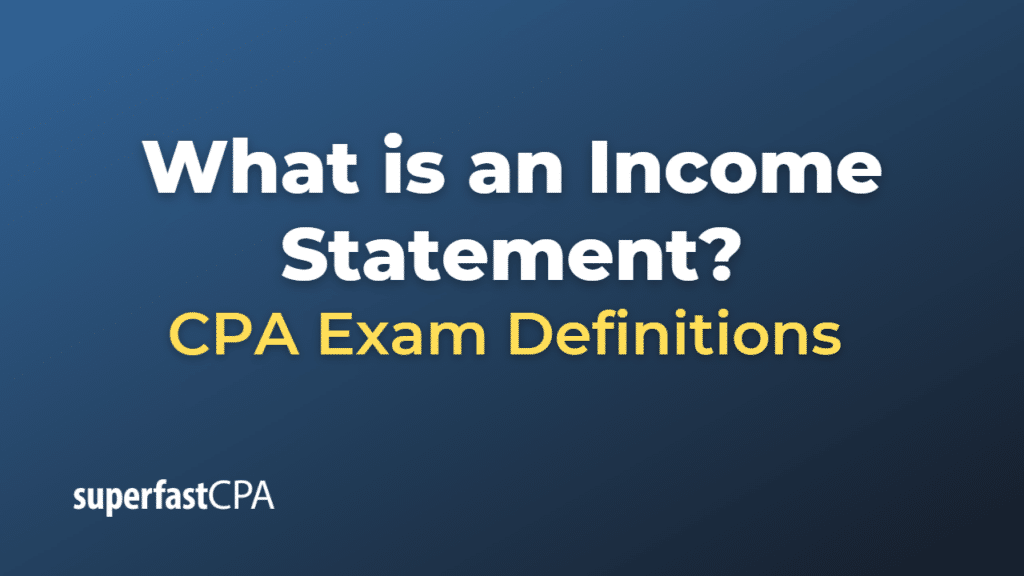Income Statement
The income statement, also known as the profit and loss statement or statement of earnings, is one of the three key financial statements used by companies to assess their performance over a specified period. The other two are the balance sheet and the cash flow statement.
The income statement provides information about a company’s revenues, costs, and expenses to show the net profit or loss for a certain period, usually a fiscal quarter or year. The income statement helps investors, creditors, and other interested parties understand the company’s earning capabilities, operating efficiency, and profitability.
An income statement generally includes the following components:
- Revenues: This includes all the money a company receives from its main business operations. In a retail business, for example, this would be sales of goods. For a service business, it might be fees earned.
- Cost of Goods Sold (COGS): These are all the direct costs associated with producing the goods sold or services provided by a company, including material costs and direct labor costs.
- Gross Profit: This is calculated by subtracting COGS from revenues.
- Operating Expenses: These are the costs that aren’t directly tied to a specific product or service but are necessary for running the business, such as sales and marketing expenses, rent, utilities, depreciation, and salaries.
- Operating Income: This is calculated by subtracting operating expenses from gross profit. It reflects the profit a company made from its operations alone.
- Interest, Taxes, and Other Income/Expenses: These items are usually listed separately and are subtracted from operating income to arrive at the net income.
- Net Income: This is the bottom line of the income statement. It reflects the total revenue left over for the owners of the company (the shareholders) after all expenses and taxes have been paid.
Each of these elements provides important insights into different aspects of a company’s financial performance.
Example of an Income Statement
Let’s consider a simplified example for a fictional company, “Fresh Bread Co.”, for the fiscal year ending December 31, 2023:
Fresh Bread Co.
Income Statement
For the Year Ended December 31, 2023
Revenues:
Sales Revenue: $500,000
Cost of Goods Sold (COGS):
Direct Materials: $200,000
Gross Profit (Sales Revenue – COGS):
$300,000
Operating Expenses:
Salaries Expense: $100,000
Rent Expense: $50,000
Utilities Expense: $20,000
Depreciation Expense: $30,000
Total Operating Expenses: $200,000
Operating Income (Gross Profit – Total Operating Expenses):
$100,000
Other Expenses:
Interest Expense: $10,000
Income Before Taxes (Operating Income – Other Expenses):
$90,000
Income Tax Expense (assume a 25% tax rate):
$22,500
Net Income (Income Before Taxes – Income Tax Expense):
$67,500
In this example, Fresh Bread Co. made $500,000 in sales revenue. After subtracting COGS and operating expenses, the operating income came out to be $100,000. After considering interest expense and income tax, the company’s net income, often referred to as “the bottom line”, came out to be $67,500. This is the profit that remains with the company after all costs and expenses have been deducted from its revenue.













